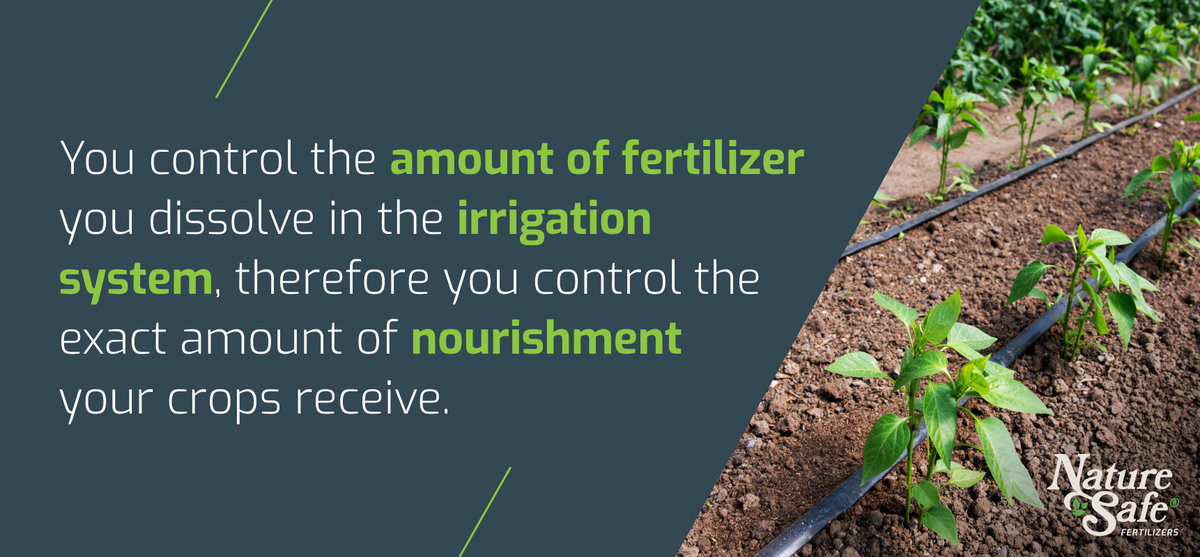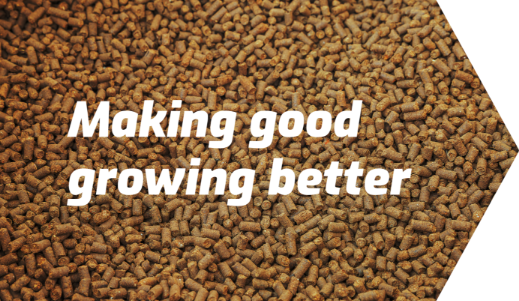
All organic fertilizers include the same nutrients in varying amounts. As long as the NPK ratio matches the needs of your crops, it doesn’t matter which one you choose, right?
Well, it can be a little more complicated than that. Different ingredients carry different advantages and disadvantages, but so do the different types of applications. Organic fertilizers typically come either pelleted, liquid, or water-soluble/dry flowable. Solid pelleted and liquid seem to explain themselves, but what about dry flowable?
What Exactly is “Dry Flowable Fertilizer?”
The term ‘dry flowable means that the fertilizer will readily transform from a solid or powdered form, into a liquid when mixed with water. These types of organic fertilizers are created in a powdered or concentrate form that is meant to be dissolved in water in a mixing tank and then applied through pivot or other irrigation system. These products are typically comprised entirely of water-soluble nitrogen (WSN), meaning the nitrogen is readily available after application, although some formulations may offer a portion of the nitrogen to be in a water insoluble (WIN) form. When a portion of the nitrogen is in a water insoluble form, the release of the nitrogen is extended over a longer period of time.
Benefits Of Organic Dry Flowable Fertilizer
Choosing a dry flowable fertilizer has several benefits. It really gives growers the best of both worlds since it shares some properties with both liquid and pelleted fertilizers.
Control of Concentration
A crop’s nutritional needs can change from environmental factors, time of year or growth stage. Growers may need to adjust the amount of nutrients that they input. You control the amount of fertilizer you dissolve into your mixing tank and ultimately apply through your irrigation system. Therefore, you control the exact amount of fertility your crops receive.
Controlling the concentration of soil and plant food guarantees that the entire crop receives evenly distributed nutrition.

Multiple applications
Because soluble fertilizers come in a fine powder, growers have some flexibility in how they apply it. Which method you choose depends on the needs of your crops at a given time.
Dissolved in Water
The primary application of organic dry flowable fertilizers is dissolving the powder in water, and applying it through the irrigation system. This creates flexibility in the amount of nutrition the crops or turf receive.
This type of application also means that you can water your crops or turf at the same time.
When applied in the liquid form, fertilizers penetrate into the soil, and send the nutrients directly to the soil where soil microbes mineralize the nutrients and feed the plant. The plants uptake the nutrients very quickly. Foliar applications don’t go directly to the roots, but still allow for rapid nutrition.
For a slower, more consistent and controlled uptake, growers may top dress their crops with dry or pelleted fertilizer.
Powder Form
Top-dressing usually happens with nitrogen rich fertilizers in early spring or even winter. The nutrients slowly make their way into the plant throughout the growing season, yielding a healthy, flourishing harvest.
Easier to Store Than Liquid Fertilizers
Liquid fertilizers can be difficult to store. They can freeze, and, if stored improperly, can evaporate, leaving high salt concentrations that can harm your crops.
As long as dry fertilizers are kept dry and cool, they don’t have an expiration date. The biggest enemy of stored dry flowable fertilizer is moisture. The University of Massachusetts’ guidelines on fertilizer storage recommends secondary storage such as a drum to keep moisture out and prevent spills.
Quicker Uptake Than Pelleted Fertilizers
The other version of dry fertilizer is pelleted. Often referred to as granular, this fertilizer is meant to be used as a top dressing or tilled into the ground. Organic pelleted fertilizers are meant to offer a controlled, slow release of nutrients. Because of this, it’s usually applied before major growth happens so that the nutrients can be consumed consistently throughout the season.
Adding the dry flowable fertilizer to water is the most popular method of application. Doing this allows the fertilizers to be taken up by the crops or turf far quicker than pelleted fertilizer. The major advantage is that dry flowable fertilizer gives you a choice.
Again, the multiple possibilities of application types means that dry flowable fertilizers can be used quickly or slowly.

Nature Safe’s Water-Soluble Fertilizer
Nature Safe Fertilizers make sure that growers see all of the benefits possible from this type of fertilizer.
7-7-7
With an even NPK ratio, the 7-7-7 formula can continuously release all the important macronutrients crops need during early growth. Made from corn steep liquor, this dry flowable fertilizer is completely plant-based.
15-0-1
High nitrogen fertilizers are most important right before the major growing season. Because 15-0-1 is so high in nitrogen, it’s ideal for those spring or winter boosts. It can be dissolved in water for a quicker release of straight nutrients to the soil, although 1/3 of the nitrogen in this formulation is water insoluble nitrogen (WIN), providing an extended release of nutrients.
Both of these Nature Safe products are OMRI listed, so you don’t have to worry about any chemicals harming your plants or water supply. Our dry flowable products have all of the advantages of both liquid and dry fertilizers in different formulations to cater to your needs. Call us today to get the best fertilizer for your fields, orchards, or commercial lawn.
